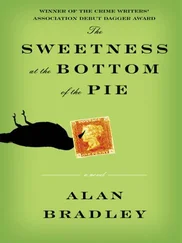324 both these opportunities:See, for example, Joseph Domenech et al., “Trends and Dynamics of HPAI—Epidemiological and Animal Health Risks,” Background Paper at the Technical Meeting on Highly Pathogenic Avian Influenza and Human H5N1 Infection, Rome, June 27-29, 2007; and A. Marm Kilpatrick et al., “Predicting the Global Spread of H5N1 Avian Influenza,” PNAS 103, no. 51 (Dec. 19, 2006): 19368-73. For a wide-ranging examination of the role wild birds play in the spread of the virus, see the presentations at the FAO-OIE International Scientific Conference on Avian Influenza and Wild Birds, Rome, May 30-31, 2006.
324 “far from over”:“New Avian Influenza Flare-ups,” FAO news release, Jan. 24, 2008.
324 “finally cause a human influenza pandemic”:“Bird Flu Situation in Indonesia Critical,” FAO news release, Mar. 18, 2008.
325 actively undergoing genetic changes:On the endemicity and continuing evolution of the virus in Indonesia, see Tommy Tsan-Yuk Lam et al., “Evolutionary and Transmission Dynamics of Reassortant H5N1 Influenza Virus in Indonesia,” PLoS Pathogens 4, no. 8 (Aug. 2008): e1000130.
325 only a few localities were completely capable:Minister of Agriculture and Rural Development Cao Duc Phat, quoted in “Vietnam Preventive Measures Are Not Enough,” Thai Press Reports, Mar. 24, 2008.
325 poultry vaccination program was flagging:Deputy Minister of Agriculture and Rural Development Bui Ba Bong, quoted in “Half-Done Vaccination Poses High Bird-Flu Risk,” Saigon Times Daily, Mar. 13, 2008.
325 would be unable to keep paying:See, for example, Jan Slingenbergh, senior officer of the FAO’s Animal Production and Health Service in “H5N1 HPAI Pathogenicity Rising, but Situation in Check,” FAOAIDE news, Situation Update 55, July 25, 2008.
325 were both becoming more lethal:Mary Pantin-Jackwood of the U.S. Department of Agriculture and colleagues from the Viet Nam National Centre for Veterinary Diagnosis in “H5N1 HPAI Pathogenicity Rising.” FAOAIDE news, Situation Update 55, July 25, 2008.
325 “We still have a very serious situation”:“China Needs Better Bird Flu Surveillance Experts,” Reuters, Feb. 18, 2009.
326 the Thai government launched:Supamit Chunsuttiwat, “Response to Avian Influenza and Preparedness for Pandemic Influenza: Thailand’s Experience,” Respirology 13, suppl. 1 (2008): S36-S40; and Kumnuan Ungchusak, “What Happened When the H5N1 Virus Visited Thailand,” lecture at the Asia Medical Forum, Lancet 2006, in Singapore, May 4, 2006.
326 continued to detect the virus:Alongkorn Amonsin et al., “Influenza Virus (H5N1) in Live Bird Markets and Food Markets, Thailand,” Emerging Infectious Diseases 14, no. 11 (Nov. 2008): 1739-42.
326 “Some commercial producers”:E-mail from Juan Lubroth, Aug. 11, 2006, citing information from the U.S. Agency for International Development.
326 a baffling transplant:“New Bird Flu Strain Detected in Nigeria,” FAO news release, Aug. 11, 2008. For more discussion see Alice Fusaro et al., “Introduction into Nigeria of a Distinct Genotype,” Emerging Infectious Diseases , 15, no. 3 (March 2009): 445-47.
326 “Somewhat surprising”:“Bird Flu Returns to Germany,” Deutsche Welle, Oct. 9, 2008.
326 “particularly worrying”:“New Avian Influenza Flare-ups,” FAO news release, Jan. 24, 2008.
326 “a new chapter in the evolution”:“Bird Flu Virus in Europe—a Hidden Danger,” FAO news release, Oct. 25, 2007.
327 “We must never forget”:“Concern Over Flu Pandemic Justified,” Address to the Sixty-second World Health Assembly, Geneva, Switzerland, May 18, 2009.
327 “Do not drop the ball”:“World Is Better Prepared for Influenza Pandemic,” Address to the ASEAN+3 Health Ministers’ Special Meeting on Influenza A (H1N1), Bangkok, Thailand, via teleconference, May 8, 2009.
327 For each one of those fatalities:Juan Lubroth, a senior FAO official, estimated in June 2008 that 240 million birds had died or been slaughtered. Julia Zappei, “Health Experts: Global Fight Against Bird Flu Remains Weak, Can Worsen Global Food Crisis,” Associated Press, June 20, 2008.
327 reducing the circulation of these viruses in animals:The likelihood of altogether eliminating the H5N1 virus is at best slim. Animal-health expert Les Sims, who first confronted this strain in Hong Kong in 1997 and has followed it since, writes, “The prospects of global eradication of H5N1 HPAI viruses circulating in Asia, Africa and Europe within the next 10 to 20 years is poor. Unless the viruses change or there are major shifts in the way poultry are reared, arising from accelerated rural development, they may never be eradicated.” Les D. Sims, “Lessons Learned from Asian H5N1 Outbreak Control,” Avian Diseases 51, no. S1 (2007): 174-81.
328 relations were strained:See, for example, the discussion over sample sharing between the agencies in Declan Butler, “‘Refusal to Share’ Leaves Agency Struggling to Monitor Bird Flu,” Nature 435 (May 12, 2005): 131.
328 cash-strapped veterinary counterparts:Senior officials at the World Organization for Animal Health, known by its French initials OIE, offered a similar critique: “Although financial resources have been targeted to the human health rather than the animal health field under the pressure of a possible human pandemic, the main message… remains that the viral load in the environment and therewith the risk of a pandemic should be diminished by eradication of the virus at its animal source.” Christianne Bruschke, Alex Thiermann, and Bernard Vallat, “Implementing Appropriate OIE/FAO Prevention Measures in Different Country Contexts,” Background Paper at the Technical Meeting on Highly Pathogenic Avian Influenza and Human H5N1 Infection, Rome, June 27-29, 2007.
330 “The present situation is unique”:“Sharing of Influenza Viruses and Access to Vaccines and Other Benefits,” Opening Remarks at the Intergovernmental Meeting on Pandemic Influenza Preparedness, Geneva, Nov. 20, 2007.
330 Researchers initially concluded:Christophe Fraser et al., “Pandemic Potential of a Strain of Influenza A (H1N1): Early Findings,” Science , published online before print May 11, 2009, doi: 10.1126/science.1176062.
330 no greater than that for ordinary flu bugs:Dr. Daniel Jernigan, deputy director of the CDC Influenza Division, at a CDC telebriefing on the investigation of human cases of H1N1 flu, May 20, 2009.
330 planning for hospitals and public health systems remains wanting:See, for example, Christopher Lee, “U.S. flu Outbreak Plan Criticized,” Washington Post, Feb. 2, 2008.
acute respiratory distress syndrome (ARDS)
Adam Malik General Hospital (Indonesia)
adenovirus
adjuvants
Africa, bird flu transmission to
age, influenza mortality curve
Alert and Response Operations, Dr. Ryan, role of
amantadine, illegal use, China
Anderson, Dr. Roy
animals
and mutation of flu virus
SARS, origin of
zoonotic diseases
antibody tests
antigenic drift
antigenic shift
Apichai Ratanawaraha
Ap Lei Chau cases
Apuchase, Louise
Asia, as influenza epicenter
Asian flu (1957)
autopsy, research needs
Читать дальше











